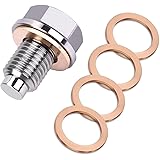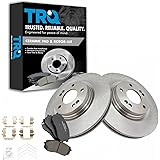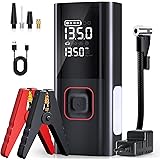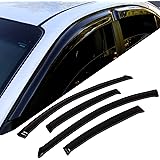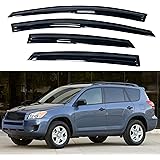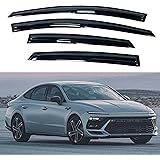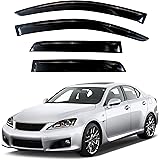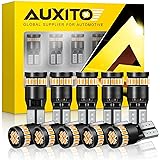Table of Contents
Are you having trouble with a stuck strut bolt? You’re not alone. Many DIY fans and mechanics struggle with this when fixing suspension systems.
It’s key to know how to safely remove a stuck bolt to avoid damage. In this article, we’ll show you how to do it right. We’ll cover important steps and techniques to make it easier.
Whether you’re a pro mechanic or a DIY beginner, our guide will help you. We’ll look at different ways, like cutting the bolt or strut, to find the best method.
Key Takeaways
- Understand the importance of safely removing stuck strut bolts
- Learn the step-by-step process for extraction
- Discover techniques to avoid damaging surrounding components
- Explore alternative methods, such as cutting the bolt or strut
- Gain confidence in tackling this common DIY challenge
Understanding Strut Bolts and Why They Get Stuck
Strut bolts are key to a car’s suspension system. Knowing how they work helps fix problems when they get stuck. The suspension system supports the car’s weight, smooths out bumps, and keeps tires in contact with the road.
The Function of Strut Bolts in Vehicle Suspension
Strut bolts hold the strut assembly to the car’s steering knuckle or suspension part. They keep the strut in place, letting the suspension work right. Having strut bolts in good shape is crucial for safe driving.
Common Causes of Seized Strut Bolts
Strut bolts can get stuck because of corrosion, rust, or being too tight. Moisture in the bolt threads can cause rust, making it hard to remove them. Here are some common reasons:
- Corrosion and rust
- Overtightening
- Improper installation
- Wear and tear over time
Signs That Indicate You Have a Stuck Strut Bolt
Spotting a stuck strut bolt early can stop more damage to the suspension. Look for unusual noises, vibrations, or rust around the strut. If you see these signs, check the strut bolts.
Knowing about strut bolts and why they get stuck is the first step to fixing the problem. Recognizing stuck strut bolt signs helps you act fast to avoid more damage.
Essential Tools for Removing Stuck Strut Bolts
Having the right tools is key when you’re dealing with stuck strut bolts. The right tools make the job easier and safer. They also help you do the job well.
Basic Hand Tools You’ll Need
You’ll need some basic hand tools to begin. A socket set with different sizes is a must for various bolt heads. You’ll also need wrenches, both adjustable and fixed, and pliers for gripping.
A breaker bar adds extra leverage for tough bolts. Don’t forget a set of rust-penetrating sprays to loosen corroded bolts.
Specialized Tools That Make the Job Easier
For really stuck bolts, specialized tools are a big help. An impact wrench can apply the force needed to break them free. A bolt extractor set is great for bolts with damaged heads.
Other tools like a heat gun or propane torch are useful. They apply heat to expand the metal and break corrosion bonds.
Safety Equipment Requirements
Safety is always a top priority. You need safety glasses to protect your eyes, gloves to prevent hand injuries, and a face mask for chemicals or heat. Make sure your workspace is well-ventilated too.
Tool Quality Considerations for Tough Jobs
The quality of your tools matters a lot for stuck strut bolts. High-quality tools are less likely to slip or break. This reduces the risk of damage to other parts.
Investing in reputable brands and durable materials is worth it. It’s a smart choice for frequent or tough tasks.
Preparation Steps Before Attempting Removal
Before you start removing stuck strut bolts, make sure your vehicle is ready. This step is often missed but is key for a safe and successful removal.
Proper Vehicle Positioning and Support
First, park your vehicle on a flat surface and engage the parking brake. Use jack stands to support it, ensuring it’s stable and at a good height for working underneath. This is crucial for safe access to the strut assembly and to avoid injuries.
Accessing the Strut Assembly
Next, you need to get to the strut assembly. You might have to remove wheels or other parts to see the strut bolts. Check your vehicle’s repair manual for how to do this on your car.
Inspecting the Condition of the Bolts
After getting access, check the strut bolts. Look for rust, corrosion, or damage. This will help you figure out the best way to remove them. If they’re corroded, you might need to use oils or heat to help.
Cleaning the Work Area for Better Access
Lastly, clean the area around the strut bolts. Get rid of dirt, grime, or anything that could get in the way. A clean area is important for efficient and safe removal of stuck strut bolts.
By doing these preparation steps, you’ll be ready to remove a stubborn strut bolt. This makes the process safer and more likely to go well.
Safety Precautions When Working with Struts
When removing strut bolts, safety is key. Struts can be dangerous, with risks from spring tension and chemical exposure.
Understanding Spring Tension Dangers
Struts have springs that are very tight. If not handled right, these springs can snap and hurt you badly. It’s important to know how to handle this tension safely.
Proper Use of Jack Stands and Support
Using jack stands and support is crucial when working under a car. Make sure the car is well-supported before you start on the strut assembly.
Eye and Hand Protection Guidelines
Wearing protective gear is a must when working with struts. Safety glasses and gloves can protect you from flying debris or sharp edges.
Working in Well-Ventilated Areas When Using Chemicals
Products for removing strut bolts, like penetrating oils, can be harsh. Always work in a well-ventilated area to avoid breathing in fumes.
| Safety Measure | Description | Importance Level |
|---|---|---|
| Jack Stands | Secure vehicle support | High |
| Safety Glasses | Protect eyes from debris | High |
| Ventilation | Prevent inhalation of chemical fumes | High |
How To Remove Stuck Strut Bolt: The Basic Approach
To remove stuck strut bolts, you need the right tools, techniques, and patience. It’s a challenging task, but with a step-by-step guide, it’s doable.
Applying Penetrating Oil Correctly
The first step is to apply penetrating oil correctly. Use oils like WD-40 or Liquid Wrench to loosen stuck parts. Spray it on the bolt, covering the head and threads.
Let it sit for at least 30 minutes. This allows the oil to work its magic. As mechanics often say, “penetrating oil is your best friend when dealing with stuck bolts.”
Using the Right Size Wrenches and Sockets
Choosing the right wrenches and sockets is key. Make sure they fit well to avoid damage. A breaker bar can help with extra leverage.
Use a socket made for this task. It will give you a better grip.
Proper Technique for Initial Loosening Attempts
When loosening a stuck bolt, technique matters. Start with gentle, consistent pressure. Avoid sudden or jerky movements.
If it doesn’t loosen right away, don’t force it. Apply more oil and wait. Repeat this a few times to loosen it slowly.
“Patience is a virtue when dealing with stuck bolts. Rushing the process can lead to more severe problems.”
The Importance of Patience in the Process
Patience is crucial when removing stuck strut bolts. Rushing can damage the bolt or hurt you. Take your time to apply oil, wait, and then try to loosen it.
This careful approach will help you succeed and avoid risks.
In conclusion, removing stuck strut bolts needs the right tools, technique, and patience. Follow these steps and you’ll be able to remove stuck bolts successfully.
Using Heat Methods for Stubborn Bolts
Heat methods can help when strut bolts are hard to remove. They work by heating the metal, which expands and breaks the corrosion bond. This makes it easier to remove the bolt.
Propane Torch Technique
A propane torch is a good tool for heating stuck bolts. Make sure the area is clear of anything that can catch fire. Heat the bolt until it’s almost red-hot, but watch out for overheating other parts.
Heat Gun Application Method
A heat gun is another tool for heating bolts. It’s safer because it doesn’t have an open flame. But, it might take longer to heat the bolt. Move the heat gun around to avoid overheating one spot.
Safety Considerations When Using Heat
When using heat, safety is very important. Wear gloves and eye protection to avoid burns or injuries. Also, make sure the area is well-ventilated and have a fire extinguisher ready.
Heat Cycling for Maximum Effectiveness
Heat cycling involves heating the bolt and then letting it cool. You can do this several times. This process can help break the corrosion bond, making the bolt easier to remove.
| Method | Advantages | Disadvantages |
|---|---|---|
| Propane Torch | Quick heating, effective for stuck bolts | Risk of overheating, open flame hazard |
| Heat Gun | Safer than propane torch, controlled heat | Slower heating, may not be as effective |
Impact Tools and Techniques
Impact tools are a strong solution for stuck strut bolts. They provide the force needed to loosen even the toughest bolts.
Using an Impact Wrench Effectively
An impact wrench is a key tool for mechanics. Make sure you use the right socket size and setting. It uses high-torque impacts to break the rust bond on stuck bolts.
Tip: Always wear protective gear, like gloves and safety glasses, when using an impact wrench. This prevents injuries from flying debris.
Manual Impact Driver Techniques
A manual impact driver is also great for loosening stuck strut bolts. It’s powered by manual force, unlike electric or air tools.
To use it, place the driver on the bolt head and hit it with a hammer. This sharp impact helps loosen the bolt.
Vibration Methods to Break Rust Bonds
Vibration can help loosen stuck parts. Tools like ultrasonic cleaners or vibration tools can break the rust bond on strut bolts.
Caution: Be careful not to damage nearby parts with too much vibration.
Air vs. Electric Impact Tools Comparison
Air and electric impact tools have their benefits. Air impact wrenches are more powerful and better for heavy-duty jobs.
Electric impact wrenches are more convenient and work well for most strut bolt removal tasks.
When picking between air and electric tools, think about your project’s needs and your preference. Consider the power source and tool weight.
Advanced Extraction Methods for Severely Stuck Bolts
When dealing with severely stuck strut bolts, advanced extraction methods are needed. These methods help avoid damage to the surrounding components. They provide the leverage and precision needed to remove stuck bolts safely.
Using Bolt Extractors and Specialty Sockets
Bolt extractors are tools designed to remove stuck bolts. They drill a hole and use left-hand threads to extract the bolt. Specialty sockets fit specific bolt heads and offer extra grip for easier removal.
Bolt extractor kits are found in auto parts stores and online. They come with various sizes to fit different bolt diameters. It’s important to follow the manufacturer’s instructions to avoid damage.
The Nut Splitting Technique
The nut splitting technique uses a tool to split the nut or bolt head. This method is great for stuck bolts due to corrosion or seizure. Nut splitters come in different sizes for clean splitting.
To use this technique, place the nut splitter around the nut or bolt head. Tighten it until it splits. Be careful not to damage surrounding components.
When and How to Cut or Drill Out a Bolt
In extreme cases, cutting or drilling out a bolt might be necessary. This method is more destructive and should be a last resort. It can damage surrounding components if not done carefully.
Start by center-punching the bolt to guide the drill bit. Use a drill bit slightly smaller than the bolt to avoid damaging threads. For cutting, use a hacksaw or cutoff wheel, taking care to avoid damage.
| Method | Description | Tools Required |
|---|---|---|
| Bolt Extractors | Removes stuck bolts by gripping the bolt head or body | Bolt extractor kit, drill |
| Nut Splitting | Splits the nut or bolt head for removal | Nut splitter |
| Cutting or Drilling | Removes the bolt by cutting or drilling it out | Drill, cutting tool (hacksaw, cutoff wheel) |
Using a Welder for Extraction in Extreme Cases
In extreme cases, welding a nut or bolt head to a stuck bolt can help extract it. This method welds a new nut or handle to the stuck bolt. It allows for more torque or leverage to remove it.
This method requires welding equipment and skill. It’s used when other methods fail and a more aggressive approach is needed.
Dealing with Rounded or Damaged Bolt Heads
Stuck strut bolts are harder to remove when the bolt head is rounded or damaged. This problem makes it tough to get the bolt out. You need special ways to remove it successfully.
Using Vise Grips and Locking Pliers
Vise grips or locking pliers are great for rounded or damaged bolt heads. They grip the bolt head tightly, helping to loosen it. Make sure to adjust the vise grips carefully to fit the bolt head well, to avoid more damage.
Bolt Head Restoration Techniques
Restoring the bolt head can help remove it. Use a file or rotary tool to shape the bolt head back to its original form. This makes it easier to grip with wrenches or sockets. But be careful not to damage the area around it or strip the threads.
Extracting Bolts with Damaged Heads
For bolts with badly damaged heads, you need special extraction tools. Bolt extractors drill a hole in the bolt and then use a left-hand threaded extractor to pull it out.
Creating New Flats on Rounded Bolts
Another way is to make new flats on the rounded bolt head. This lets you use a wrench or socket. Use a grinder or file to create these new surfaces. This method needs precision to avoid more damage.
Using these strategies helps manage rounded or damaged bolt heads. It makes it easier to remove stuck strut bolts successfully.
Chemical Solutions for Rust and Corrosion
Chemical solutions are a great way to fight rust and corrosion on strut bolts. They make removing stuck bolts much easier.
Most Effective Penetrating Oils for Automotive Use
Penetrating oils get into small spaces to loosen rust. WD-40, Liquid Wrench, and PB Blaster are top choices. They break down rust, helping to remove stuck bolts.
Homemade Penetrant Solutions
Homemade solutions are a good alternative. A mix of acetone and Automatic Transmission Fluid (ATF) works well. It helps break down rust and corrosion.
Application Techniques for Maximum Effectiveness
Applying penetrating oils right is key. Spray it on the bolt and make sure it’s covered. Then, wait a bit before trying to remove the bolt.
Dwell Times and Reapplication Strategies
The time the oil sits on the bolt matters a lot. Letting it sit for hours or overnight helps a lot. You might need to apply it again to loosen the bolt.
Vehicle-Specific Considerations
Knowing your vehicle well is crucial for removing stuck strut bolts. Each car has its own unique features that affect how easy it is to remove these bolts.
Differences Between Front and Rear Strut Bolts
Front and rear strut bolts differ in design and location. Front bolts are easier to reach but face more stress, which can cause them to seize.
Common Problem Areas in American vs. Foreign Vehicles
American cars usually have bigger engine bays, making it simpler to get to the bolts. But, some foreign cars have standard strut setups, which can make removal easier.
Dealing with Aluminum vs. Steel Components
Car parts can be made of aluminum or steel. Aluminum parts need extra care to avoid damage when removing bolts. Steel parts can handle more force but might rust more easily.
Accessing Bolts in Tight Engine Bay Configurations
Getting to strut bolts in cars with small engine bays is hard. You might need special tools or remove other parts to get better access.
| Vehicle Type | Common Challenges | Recommended Approach |
|---|---|---|
| American Vehicles | Potential for larger strut bolts, more rust | Use penetrating oil, consider heat application |
| Foreign Vehicles | Tighter engine bays, less accessible bolts | Utilize specialized tools, consider component removal for access |
| Vehicles with Aluminum Components | Risk of damaging components during removal | Apply gentle force, use appropriate lubricants |
Common Mistakes to Avoid During Removal
Removing stuck strut bolts can be tricky. Knowing the common mistakes can save you time and frustration. It also helps avoid expensive repairs.
Improper Tool Selection and Usage
Choosing the wrong tools or using them wrong can harm the bolt or other parts. It’s key to pick the right tools, like wrenches and sockets that fit the bolt head well.
Using Excessive Force Without Proper Technique
Too much force without the right method can break the bolt or damage the strut. Learning the right way to loosen stuck bolts is important. This includes using penetrating oils and applying force slowly.
Ignoring Signs of Potential Bolt Breakage
Not noticing when a bolt might break can cause bigger issues. Being alert and ready to change your approach if you see signs of breakage is crucial.
Rushing the Process and Its Consequences
Hurrying through the removal can lead to mistakes and damage. It’s important to take your time. Proper preparation, using the right techniques, and watching your progress are key to success.
| Mistake | Consequence | Prevention |
|---|---|---|
| Improper Tool Use | Damage to bolt or surrounding components | Select appropriate tools and use them correctly |
| Excessive Force | Bolt breakage or strut assembly damage | Apply gradual force with proper technique |
| Ignoring Breakage Signs | Further damage or complications | Monitor for signs of breakage and adjust strategy |
| Rushing the Process | Mistakes, damage, and safety risks | Take time to prepare and apply correct techniques |

When to Seek Professional Help
Trying to remove stuck strut bolts can sometimes cause more problems than it solves. Knowing when to ask for help is key to avoiding damage to your car and keeping yourself safe.
Signs That the Job Is Beyond DIY Capability
Severe corrosion on the strut bolts or damage around them means it’s time to call a pro. If you’ve tried different methods and still can’t get them out, you likely need specialized tools and skills.
Cost Considerations: DIY vs. Professional Service
DIY repairs can save money, but sometimes, hiring a professional is cheaper in the long run. A skilled mechanic can do the job right the first time, saving you from costly repairs later.
| Service | DIY Cost | Professional Cost |
|---|---|---|
| Strut Bolt Removal | $0 – $50 | $100 – $300 |
| Additional Repairs | $0 – $500 | $200 – $1000 |
Finding a Qualified Mechanic for Difficult Cases
To find a good mechanic, ask friends or family for recommendations or check online reviews. Make sure they have experience with your car’s make and model.
“A good mechanic is like a good doctor – they diagnose the problem accurately and provide the right treatment.”
What to Expect When Taking Your Vehicle to a Shop
When you take your car to a shop, expect a detailed inspection and a clear repair estimate. A reputable mechanic will explain the work needed and the costs involved.
Conclusion
Removing stuck strut bolts can be tough, but it’s doable with the right tools and methods. This article has covered everything you need to know. It includes how to prepare, stay safe, and use different techniques to remove stuck bolts.
There are several ways to remove stuck bolts, like using penetrating oil, heat, or impact tools. It’s important to be careful and patient. This way, you avoid damaging other parts or breaking the bolt.
For the best results, make sure your vehicle is in the right position and supported. Check the bolts’ condition before you start. Using the correct wrenches and applying penetrating oil correctly can help a lot. If the bolts are really stuck, you might need to try advanced methods or get professional help.
By using the tips and techniques from this article, you can remove stuck strut bolts successfully. This will help you finish your suspension repair or maintenance job.


